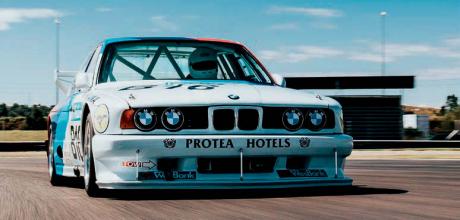1990 BMW 535i Racer E34
BMW South Africa has a rich history of building cars unique to its market, we track down and drive a factory-commissioned E34 5 Series racer that has a history like no other.
Words: Wilhelm Lutjeharms
Photography: Peet Mocke
E34 535i Racer
Imagine, as a youngster in the early 1990s, you eagerly watch production car racing. Thirty-years later one of only two factory-commissioned E34 535i race cars crosses your path, and you decide to acquire the car which has been meticulously restored. Then, a few months later you go through some old transparencies, only to realise that you watched, in person, the very car you now own racing at the very same track that you’ve just done the car’s first shakedown on!
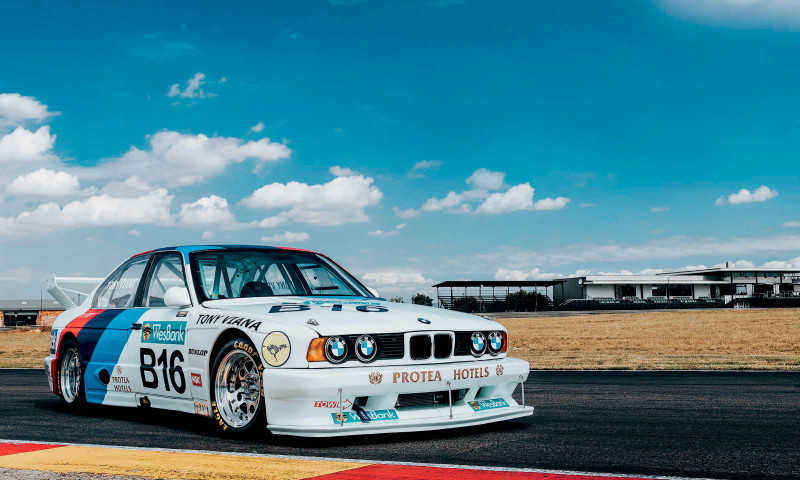
That is part of Grant Viljoen’s sentimental connection between him and this rare race car. Apart from being a car fanatic, his love for, specifically BMW, is clearly evident. However, he is no stranger to race cars. After completing its 10-year restoration project, he recently took a prime replica example of Mercedes- Benz’s “Red Pig” (a 300SEL 6.3 W109/108 which laid the foundation for Mercedes-AMG) on the track.
As we arrive at Zwartkops Raceway outside Pretoria in South Africa, the importance of this car is not lost on me. Just over 30-years ago this very car was raced here, flat-out, having being designed and developed by local specialists with the support of BMW SA. In the late ‘80s, BMW SA was focused on their Group N campaign in the locally built E30 325iS, having five factory entered cars, and supporting a number of privateer cars. Despite this commitment, the decision was made that BMW should have some sort of representation in the Wesbank Modified Saloon Championship. In was decided to enter Class B and breaking their tradition, the cars were to be built by Owen Ashley Racing in Cape Town, and not by Tony Viana in Odendaalsrus.
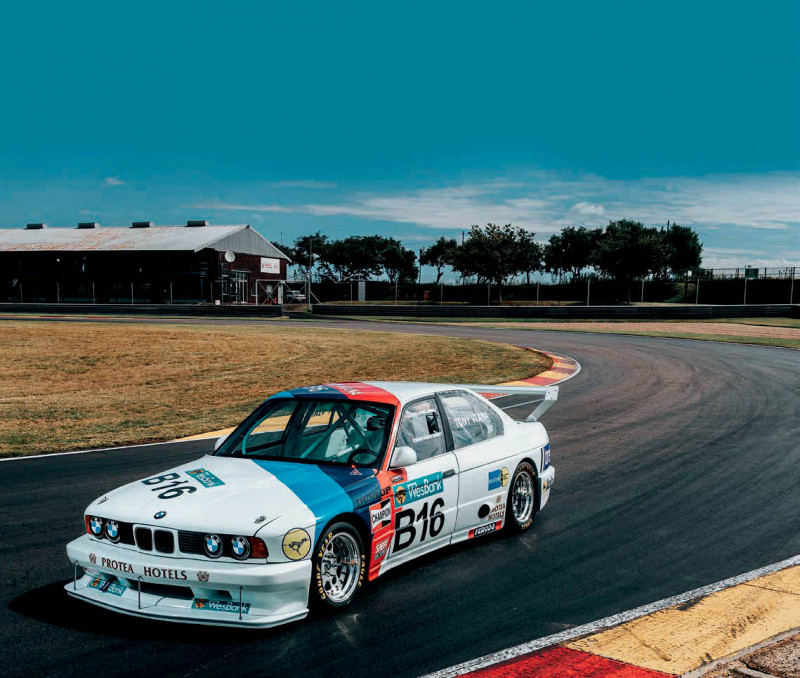
As is clear from the pictures, this car represents so much more than just a tuned sedan. It is loosely based on the E34 535i, but that is pretty much where the similarities end. The cars would both run the M30B35 motor, but substantially modified. The engine blocks were replaced with those from the European 745i Turbo E23, which featured oil sprayed into the bottom of the pistons through oil jets. The engine was enlarged to 3.6-litres with a 94mm bore and 86mm stroke. Gearboxes were five-speed manual X-Trac units, the differentials being standard, albeit with varying diff ratios according to the track raced on. The wheels were split-rim BBS or Compomotive rims, with centres turned by local engineer Eddie Pinto. The standard suspension was replaced with Owen Ashley’s signature horizontal coil cantilever suspension setup.

Tony Viana’s car, car number B16 (this example), was the first of the two cars to hit the track, sporting traditional Winfield colours. “This car made its debut at Killarney Raceway on 6 October 1990, but didn’t have a wing on it. At that time it also had a fibre glass boot lid. However, when a wing from the 1989 3 Series Wesbank race car was installed and the season started again 1991, they had to make a plan because the fibre glass boot lid could not carry the weight of the wing. I fortunately still have the original fibre glass boot lid at home with the correct racing colours of that season.”
Today, the car is basically as it was raced back in 1991 with the motorsport colours. Obviously there were some changes made from race to race back in the day, but the setup as it is now is as accurate as can be expected.
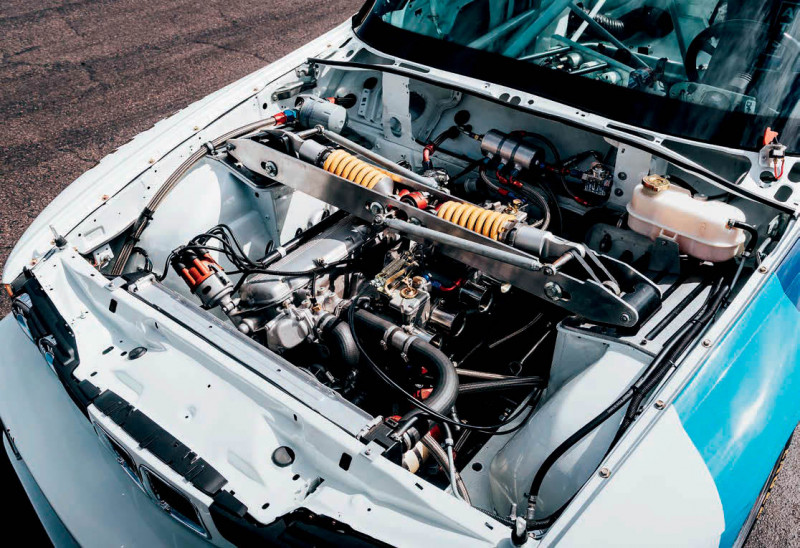
“I was fascinated by saloon and production car racing. The magic of seeing an everyday car all kitted out and ready to race, that connection between a normal road car and a race car is just something special. In May 1991 when I saw these cars for the first time on the track, I was just blown away. Here was a large, family-size BMW saloon racing competitively on the track. They just made such a massive impression on me.”
“A few years ago I wondered what happened to these cars. A friend in the know told me that Nick Sheward is restoring the cars. After a meeting and seeing the cars for myself, I told Nick that if he ever wanted to sell them to please consider me. Then, in March 2021, I got the call. The two cars were Deon Joubert’s overall Wesbank Championship winner and the one I bought was Tony Viana’s car.”
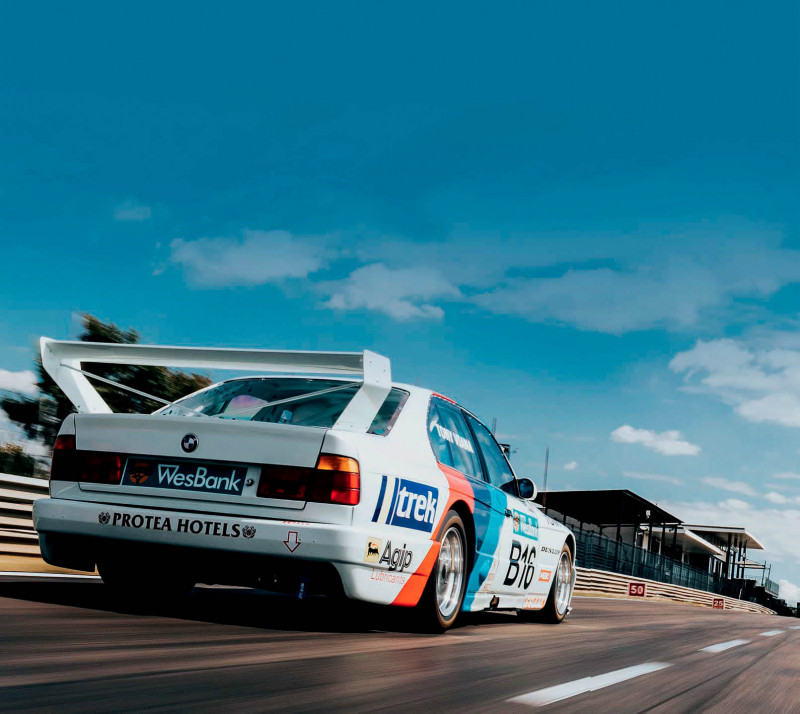
The 1992 season was very successful and saw the two BMW drivers making their way up the leader board. Towards the end of the season, Tony Viana would be lying first and Deon Joubert second overall. Tony was then absent from the last three races due to his battle with cancer, Deon Joubert taking Class B and the overall Championship that year in the 535i.
Stepping closer to the car it becomes very clear that this is a purpose-built race car. The custom body has been completely remodelled into a two-door 5 Series race car. New materials have also been used throughout, and although the roof and doors are still steel, many of the others are custom fibre glass panels.
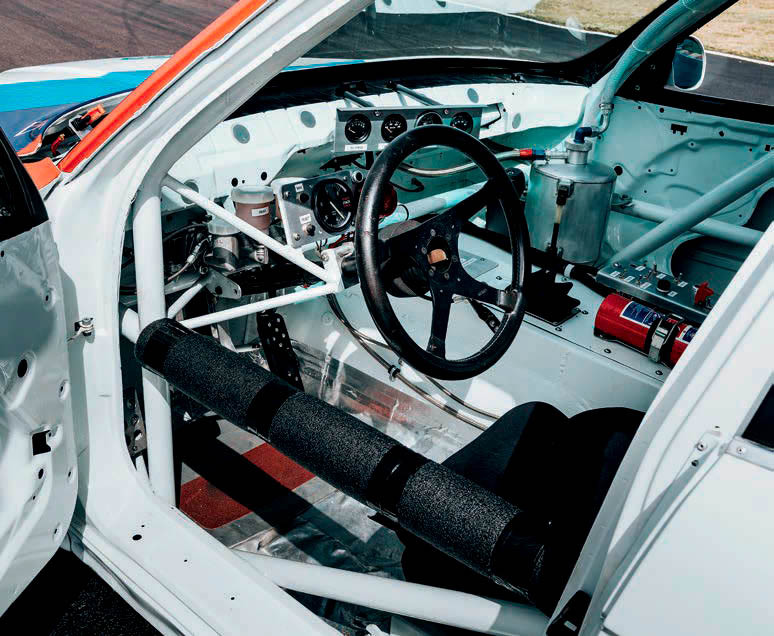
At the rear the massive wing is supported by two cross members. Incidentally, the boot can still be opened as normal. We do just that and a network of piping becomes visible, while it seems the faded overflow plastic container for the engine oil is likely still the original unit. You can’t help but notice the suspension components through the rear window – what a sight!
We open the engine compartment and the details continue to grab your attention. Here the inboard suspension struts are neatly placed over the engine, while the large air intakes can be aptly described as pure mechanical art.

Driving such an immensely important piece of history always leaves me breathless. The owner kindly shows me around the cabin and asks me to please not crash it. I’m not worried about that, but I am concerned about shifting the non-synchromesh gearbox without grinding the gears.

“Just tap off the throttle and move the ‘lever into the next ratio, don’t rush it, and you will see it slips in.” Point taken, but it sounds easier said than done.
You also sit so much lower than in a standard road car, which means I can barely see over the bonnet (even at six-foot two-inches).
The noise is the overwhelming characteristic of the car though, one being constantly bombarded with a cacophony of mechanical sounds.
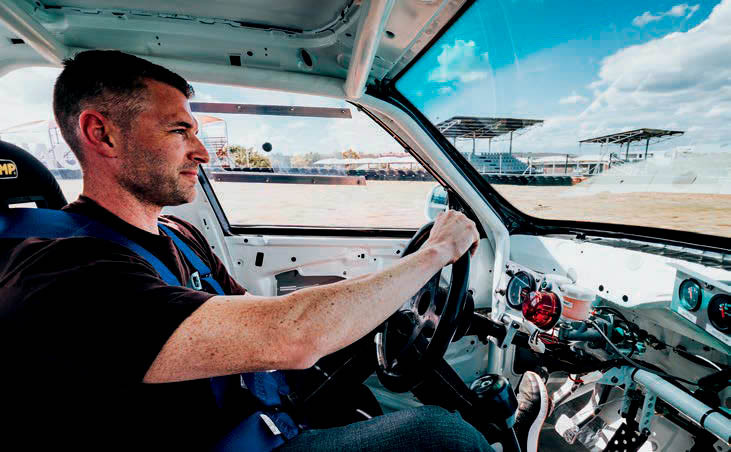
Selecting a lower gear also comes more easily that I expected. With these older racing cars I’ve learned over the years that you must really have a feel for how these transmissions work. A quick blip of the throttle before you engage a lower gear allows the lever to again slip into the lower ratio without any issues. There’s nothing quite like executing a smooth shift through a challenging gearbox. Pure bliss!
With all unnecessary weight removed, the straight-line acceleration is also quite impressive, the car only weighing around 1,100kg in race trim. The engine breathes so cleanly, revs with ease and pulls you down the straights with proper race car levels of acceleration. It is an intense experience and as I return to the pits, I park the car and pull the thin cable to open the car door and climb out – buzzing.
The immediate future will be a wonderful journey for the owner and his new piece of automotive history. Getting to know the limits of the car and to be able to drive it on the very track it raced on 30-years ago seems completely fitting.
THANKS Zwartkops Raceway: zwartkops.co.za
The noise is the overwhelming characteristic of the car...
The forgotten race cars
In 1995, these cars found their way to Zimbabwe, where they would remain for almost 20-years. Both cars were then turbocharged, but proved to be unreliable and were eventually retired, although still raced on the odd occasion.
After they were finally retired, they were displayed at a BMW dealership which eventually closed down. Then they found their way to a Mercedes-Benz dealership and somehow ended up lying out in the fi eld next door, exposed to the elements. They were fortunately rescued by Leon Joubert, who moved the cars to his farm and parked them under cover.
In 2014, the Joubert car was brought back to South Africa, and then sold onto Nick Sheward after a suitable deal was reached. Nick then traced the Viana car in Zimbabwe and ended up owning both cars. Nick, a very competent restorer, spent the following seven-years restoring both cars simultaneously back to their original specification, their present condition being testament to his restoration skills. With much eff ort Nick was even able to track down some of the original specialists who worked on these cars, specifically the guy who made the fibre glass panels and the apprentice (at the time) who painted the cars.
Nick has always been involved in historic racing in South Africa. He is known for tracking down and finding historically signifi cant cars and then restoring them. Another significant car on his CV is the other South-African-only Wesbank BMW 745i that was raced locally. Nick found this car, saved it and also performed a full restoration on it.


